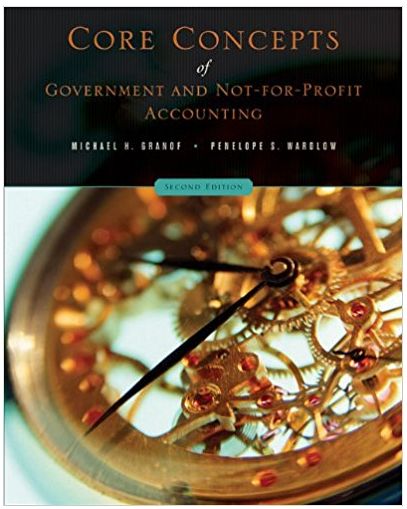The debt service phase special assessment bonds are accounted for in a debt service fund (see the
Question:
The debt service phase special assessment bonds are accounted for in a debt service fund (see the previous problem).
As indicated in the previous problem, a government issued $8.5 million of special assessment bonds to finance a sewer-extension project. To service the debt, it assessed property owners $8.5 million. Their obligations are payable over a period of five years, with annual installments due on March 31 of each year. Interest at an annual rate of 8% is to be paid on the total balance outstanding as of that date.
The bonds require an annual principal payment of $1.5 million each year for five years, which is due on December 31. In addition, interest on the unpaid balance is payable twice each year, on June 30 and December 31, at an annual rate of 8%.
The government agreed to make up from its general fund the difference between required debt service payments and revenues.
At the start of the year, the government established a debt service fund. It estimated that it would collect from property owners $1.3 million in special assessments and $500,000 of interest on the unpaid balance of the assessments. In addition, it expected to earn interest of $80,000 on temporary investments. It would be required to pay interest of $680,000 and make principal payments of $1.7 million on the outstanding debt. It anticipated transferring $500,000 from the general fund to cover the revenue shortage.
During the year, the government engaged in the following transactions, all of which affect the debt service fund.
a. It recorded the $8.5 million of assessments receivable, estimating that $200,000 would be uncollectible.
b. The special assessments bonds were issued at a premium (net of issue costs) of $120,000. The government recognized the anticipated transfer of the premium to the debt service fund.
c. During the year, the government collected $2.0 million in assessments and $400,000 in interest (with a few property owners paying their entire assessment in the first year). During the first 60 days of the following year, it collected an additional $100,000 in assessments and $10,000 in interest, which were due the previous year.
d. It transferred $120,000 (the premium) from the capital projects fund.
e. It purchased $800,000 of six-month Treasury bills as a temporary investment.
f. It made its first interest payment of $340,000.
g. It sold the investments for $850,000, the difference between selling price and cost representing interest earned.
h. It recognized its year-end obligation for interest of $340,000 and principal of $1.7 million but did not actually make the required payments.
i. It prepared year-end closing entries.
1. Prepare appropriate journal entries for the debt service fund.
2. Prepare a statement of revenues, expenditures, and changes in fund balance in which you compare actual and budgeted amounts.
3. Prepare a year-end balance sheet.
4. Does your balance sheet report the balance of the bonds payable? If not, where might it be recorded?
Balance sheet is a statement of the financial position of a business that list all the assets, liabilities, and owner’s equity and shareholder’s equity at a particular point of time. A balance sheet is also called as a “statement of financial...
Step by Step Answer:

Core Concepts of Government and Not For Profit Accounting
ISBN: 978-0471737926
2nd edition
Authors: Michael H. Granof, Penelope S. Wardlow





